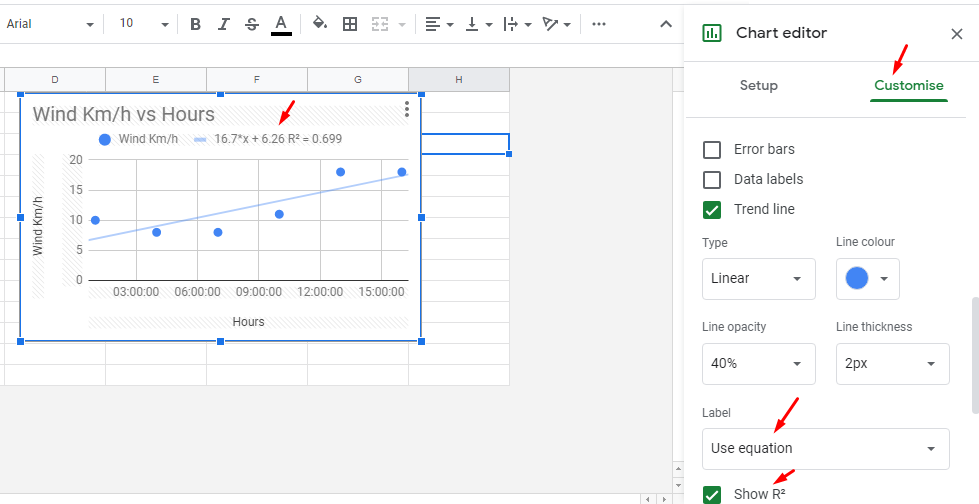
STEP 2:Select the Format Trendline option. In the example below, you want to change the color of the trendline to blue, increase the width to 2.5, and change the dash type. You can change the color, transparency, width, dash type, compound type, cap type, and more for your trendline. Now that you know how to add trendline in Excel, let’s move forward to understand how to format them. Moving Average – It is used to smooth the extreme fluctuations of data and show a clearer direction to data trends.Polynomial – It is a curved line that should be used when data fluctuates more than one rise and fall.Logarithmic – This trendline should be used when the data increase/decrease quickly and then levels out.Exponential – It shows the increase/decrease in the value of data at an increasingly higher rate.

Linear – It is a straight line that shows the increase/decrease in the value of data over time at a steady rate.You need to pass to the LINEST function the Logarithm of the Y values, the first value returned is the slope, whereas the exponential of the second value is the intercept (the LINEST function returns an array of values).There are different types of trendlines available to be added to the Excel Charts:

The slope and intercept are calculated a bit different than in the Linear forecast.

Or calculating manually using the equation Y = c * exp(b * X) where b is the SLOPE and c is the INTERCEPT. Once we have the above data it will be easy to build the below chart:įor the calculation of the Exponential Forecast. To calculate the slope and the intercept, we have the array formula in P4:Q4: =LINEST(C4:C13,B4:B13,TRUE,FALSE)


 0 kommentar(er)
0 kommentar(er)
